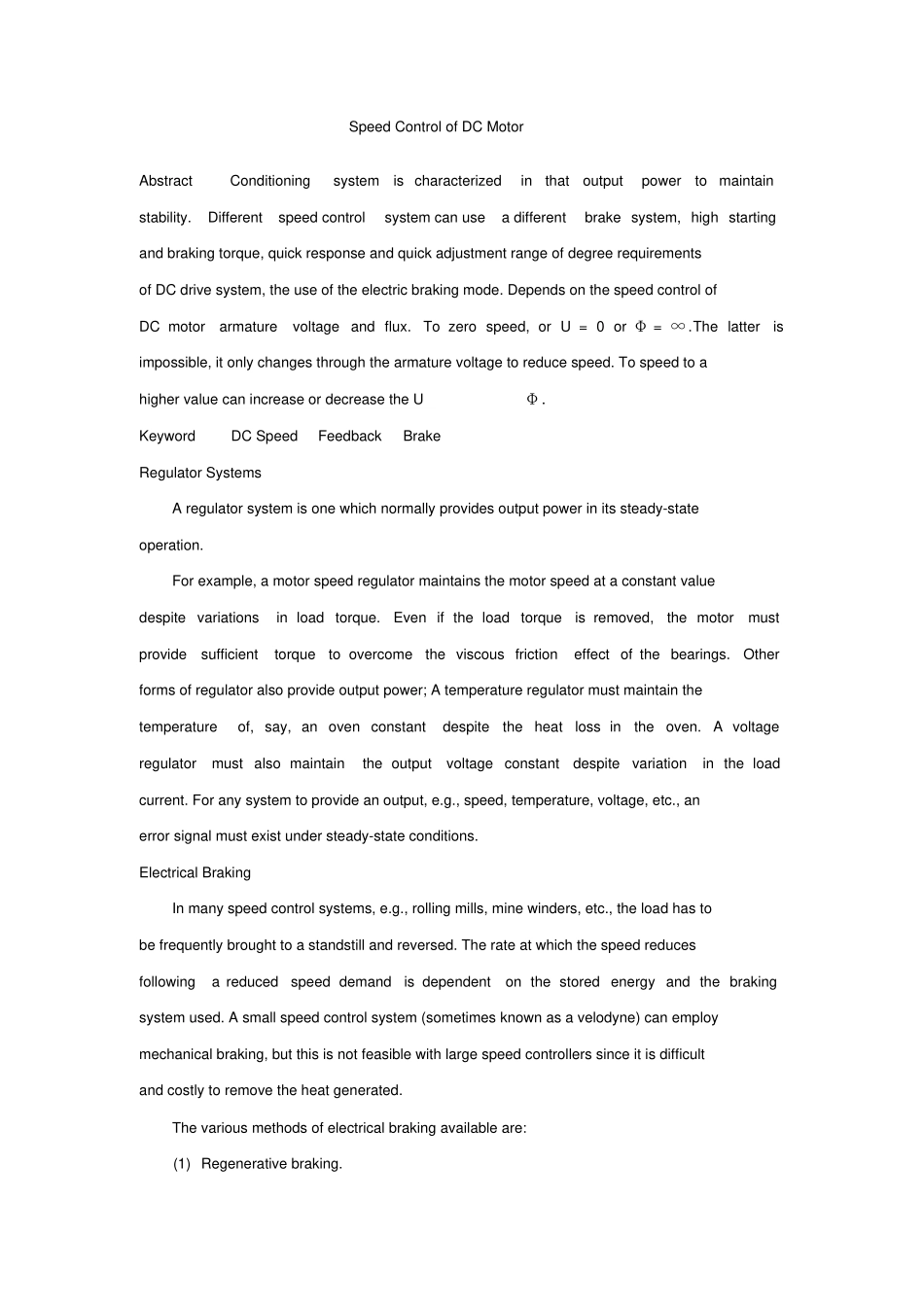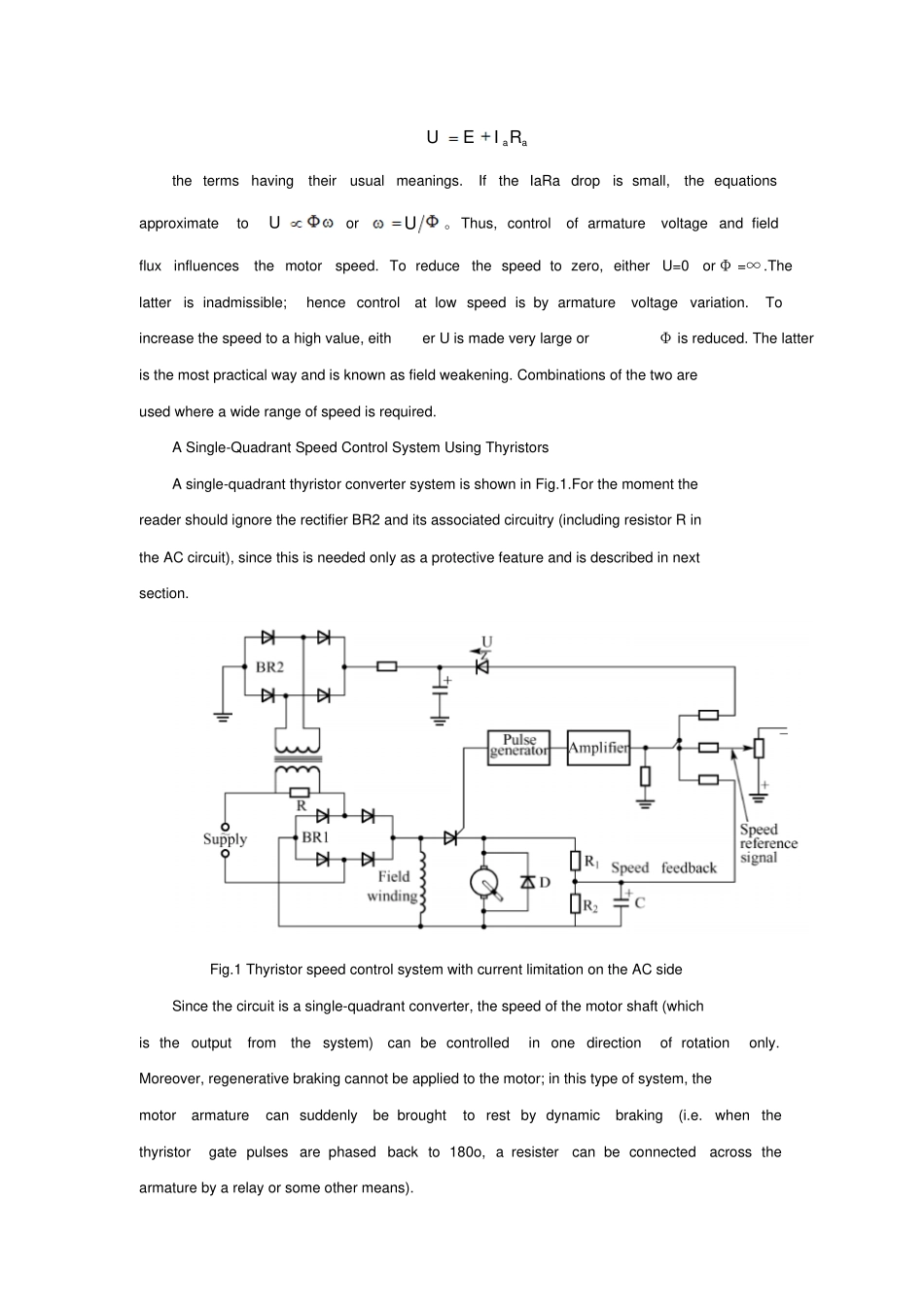Speed Control of DC Motor Abstract Conditioning system is characterized in that output power to maintain stability. Different speed control system can use a different brake system, high starting and braking torque, quick response and quick adjustment range of degree requirements of DC drive system, the use of the electric braking mode. Depends on the speed control of DC motor armature voltage and flux. To zero speed, or U = 0 or Φ = ∞ . The latter is impossible, it only changes through the armature voltage to reduce speed. To speed to a higher value can increase or decrease the U Φ .Keyword DC Speed Feedback Brake Regulator Systems A regulator system is one which normally provides output power in its steady-state operation. For example, a motor speed regulator maintains the motor speed at a constant value despite variations in load torque. Even if the load torque is removed, the motor must provide sufficient torque to overcome the viscous friction effect of the bearings. Other forms of regulator also provide output power; A temperature regulator must maintain the temperature of, say, an oven constant despite the heat loss in the oven. A voltage regulator must also maintain the output voltage constant despite variation in the load current. For any system to provide an output, e.g., speed, temperature, voltage, etc., an error signal must exist under steady-state conditions. Electrical BrakingIn many speed control systems, e.g., rolling mills, mine winders, etc., the load has to be frequently brought to a standstill and reversed. The rate at which the speed reduces following a reduced speed demand is dependent on the stored energy and the braking system used. A small speed control system ...


